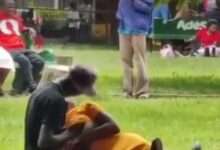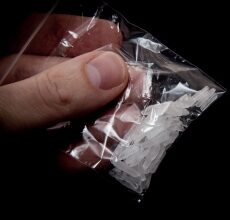Heatstroke: Signs & Symptoms and Treatment
Untreated heatstroke can quickly damage your brain, heart, kidneys and muscles.

Heatstroke: Signs & Symptoms and Treatment
Heatstroke is a condition caused by your body overheating, usually as a result of prolonged exposure to or physical exertion in high temperatures.
This most serious form of heat injury can occur if your body temperature rises to 104 F (40 C) or higher. The condition is most common in the summer months. Heatstroke requires emergency treatment.
Mental Health Patients Increase
Untreated heatstroke can quickly damage your brain, heart, kidneys and muscles. The damage worsens the longer treatment is delayed, increasing your risk of serious complications or death.
Biological Science behind Heatstroke
Heatstroke occurs when your body temperature rises to 104 F (40 C) or higher. Normal body temperature is around 98.6 F (37 C).
Heatstroke can be caused by exposure to high temperatures or physical exertion in high temperatures that leads to an increase in core body temperature. When your body temperature rises too high, it can cause damage to your brain, heart, kidneys and muscles.
Signs and Symptoms
Heatstroke signs and symptoms include:
- High body temperature:
A core body temperature of 104 F (40 C) or higher is the main sign of heatstroke.
- Altered mental state or behavior:
Confusion, agitation, slurred speech, irritability, delirium, seizures and coma can all result fromheatstroke.
- Alteration in sweating:
In heatstroke brought on by hot weather, your skin will feel hot and dry to the touch. However, in heatstroke brought on by strenuous exercise, your skin may feel dry or slightly moist.
- Nausea and vomiting:
You may feel sick to your stomach or vomit.
- Flushed skin:
Your skin may turn red as your body temperature increases.
- Rapid breathing:
Your breathing may become rapid and shallow.
- Racing heart rate:
Your pulse may significantly increase because heat stress places a tremendous burden on your heart to help cool your body.
- Headache:
Your head may throb.
Heatstroke: Signs & Symptoms and Treatment
Signs and Symptoms among Babies
Babies are more susceptible to heatstroke than adults because their bodies are less able to regulate their internal temperature. Signs and symptoms of heat exhaustion in babies include:
- Excessive thirst
- Dry mouth
- No tears when crying
- Sunken fontanelle (soft spot on the top of the head)
- Fewer wet diapers than usual
- Dark yellow urine
- Cool and clammy skin
- Irritability or fussiness
Signs and Symptoms among Kids
Children are also more susceptible to heat exhaustion than adults because their bodies are less able to regulate their internal temperature. Signs and symptoms of heat exhaustion in children include:
- Fatigue
- Nausea
- Headache
- Excessive thirst
- Muscle cramps
- Dizziness or lightheadedness
Signs and Symptoms among Men
Men are more likely than women to experience heat exhaustion because they tend to sweat more than women. Signs and symptoms of heat exhaustion in men include:
- Heavy sweating
- Pale skin
- Muscle cramps
- Fatigue
- Weakness
- Dizziness or lightheadedness
Signs and Symptoms among Women
Women are less likely than men to experience heat exhaustion because they tend to sweat less than men. Signs and symptoms of heat exhaustion in women include:
- Heavy sweating
- Pale skin
- Muscle cramps
- Fatigue
- Weakness
- Dizziness or lightheadedness
Signs and Symptoms among the Elderly
Older adults are more susceptible to heat exhaustion because their bodies are less able to regulate their internal temperature. Signs and symptoms of heat exhaustion in older adults include:
- Confusion or disorientation
- Dizziness
- Fainting
- Headache
- Muscle cramps
- Nausea
- Pale skin
- Profuse sweating
- Rapid heartbeat
Death Rate of Heatstroke
According to a study published by The Lancet 1, between 1990 and 2019 there were an estimated 1.2 million deaths globally due to exposure to high temperatures.
- The highest death rates were observed in South Asia (44% of global deaths),
- Southeast Asia (21%),
- sub-Saharan Africa (10%),
- East Asia (9%),
- North Africa and Middle East (7%),
- Latin America (6%), Europe (2%) and
- North America (1%).
Heatstroke: Signs & Symptoms and Treatment
Remedies and Treatment for Heatstroke
If you suspect someone has heatstroke, it’s important that you take immediate action while waiting for emergency treatment. Here are some home remedies that can help cool down an overheated person:
- Move the person to a cooler place:
If possible, move the person to an air-conditioned environment or at least a shady area.
- Remove excess clothing:
Remove any excess clothing and loosen tight clothing.
- Cool the person down:
Use whatever methods you have available to cool the person down. You can spray the person with cool water, apply ice packs to the neck, armpits, and groin, or immerse the person in a cold bath or shower.
- Monitor the person’s temperature:
Continue to monitor the person’s temperature and cool them down until their body temperature drops to 101 F (38 C) or lower.
- Offer fluids:
Encourage the person to drink cool water or other non-alcoholic, non-caffeinated beverages.
- Seek medical attention:
Heatstroke is a medical emergency that requires prompt treatment. Call for emergency medical help immediately if you suspect someone has heatstroke.
Holiday Travel: Tips on Skin Breakouts & Acne
Tips to prevent heatstroke:
Stay hydrated: Drink plenty of fluids, especially water, to keep your body cool and hydrated. Avoid drinks that contain caffeine or alcohol, as they can dehydrate you.
- Dress appropriately:
Wear lightweight, light-colored, and loose-fitting clothing to help your body stay cool.
- Stay indoors:
Avoid being outside during the hottest part of the day, usually between 10 a.m. and 4 p.m.
- Take breaks:
If you must be outside, take frequent breaks in the shade or indoors to cool down.
- Use sunscreen:
Apply sunscreen with an SPF of at least 30 to protect your skin from the sun’s harmful rays.
- Avoid hot cars:
Never leave anyone, especially children or pets, in a parked car, even if the windows are cracked.
- Know your risk factors:
Certain factors can increase your risk of heatstroke, such as age (older adults and young children are more susceptible), certain medications (such as diuretics and antihistamines), and certain medical conditions (such as heart disease and obesity).
- Be aware of the signs and symptoms:
Knowing the signs and symptoms of heatstroke can help you take action quickly if you or someone else is experiencing them. Symptoms include high body temperature, altered mental state or behavior, alteration in sweating, nausea and vomiting, flushed skin, rapid breathing, racing heart rate, headache, dizziness or lightheadedness






















